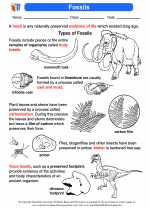What are Cross-Cutting Relationships?
Cross-cutting relationships refer to the principle that if a geological feature cuts across another feature, it must be younger than the feature it cuts across. This concept helps geologists determine the relative ages of geological formations and events.
Examples of Cross-Cutting Relationships
1. Faults: When a fault cuts through rock layers, the fault is younger than the rock layers it displaces.
2. Intrusions: Igneous intrusions, such as dikes or sills, that cut across existing rock layers are younger than the rock they intrude into.
3. Veins: Mineral veins that cut across existing rock layers are younger than the surrounding rock.
Using Cross-Cutting Relationships to Determine Relative Ages
By applying the principle of cross-cutting relationships, geologists can create a relative timeline of geological events in a particular area. This allows them to understand the sequence of events and the relative ages of different rock layers and geological features.
Study Tips for Cross-Cutting Relationships
1. Understand the principle: Make sure you grasp the concept that a feature cutting across another is younger than the feature it cuts across.
2. Practice with diagrams: Work with diagrams of rock layers, faults, and intrusions to visualize and understand how cross-cutting relationships apply.
3. Apply the concept: Look for real-world examples of cross-cutting relationships in geological formations and try to determine the relative ages of the features involved.
[Cross-cutting Relationships] Related Worksheets and Study Guides:
.◂Science Worksheets and Study Guides Eighth Grade. Fossils

 Activity Lesson
Activity Lesson
 Worksheet/Answer key
Worksheet/Answer key
 Worksheet/Answer key
Worksheet/Answer key
 Worksheet/Answer key
Worksheet/Answer key
 Worksheet/Answer key
Worksheet/Answer key
 Vocabulary/Answer key
Vocabulary/Answer key
 Vocabulary/Answer key
Vocabulary/Answer key
